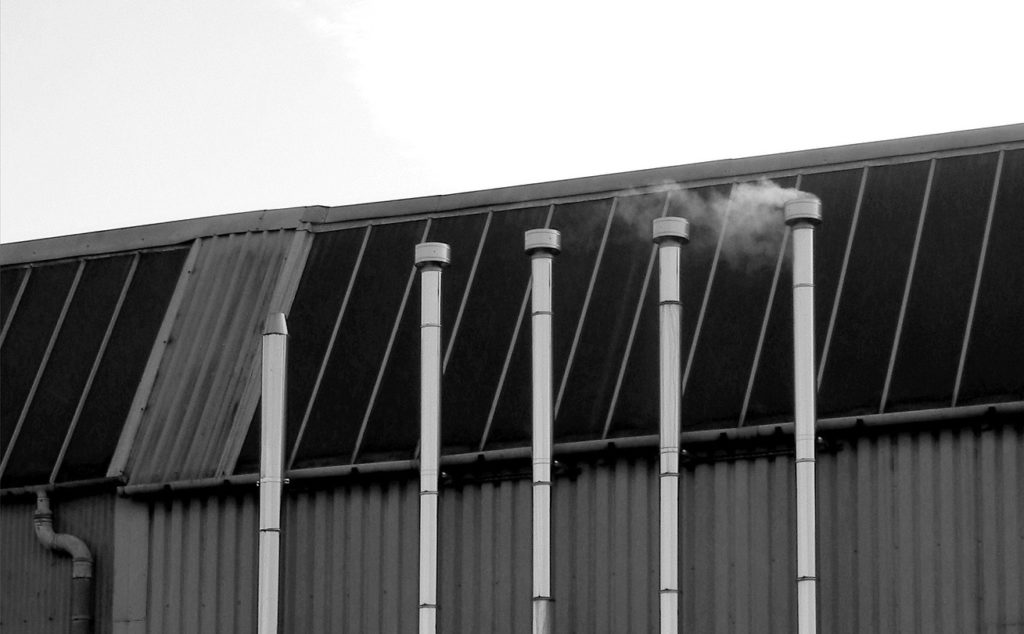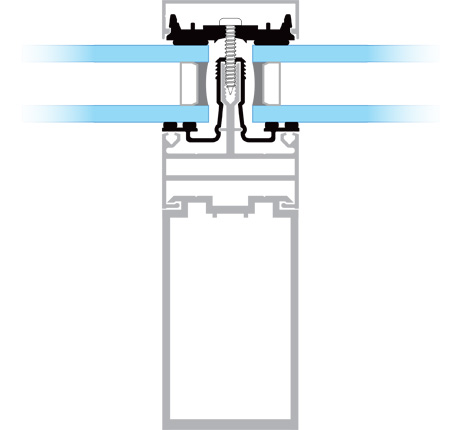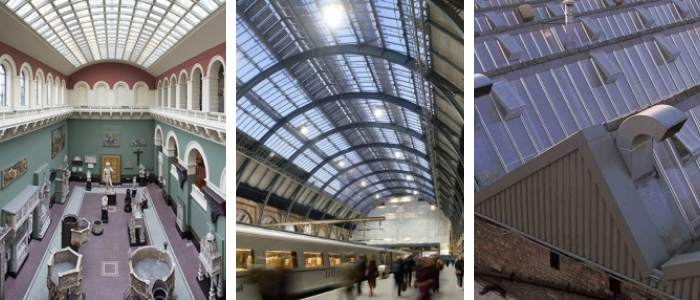A Guide to Patent Glazing
Patent glazing systems are installed nationwide for many external applications. For both domestic and commercial owners, patent glazing has proven economic benefits and a great track record when it comes to practicality, durability, and efficiency.
However, for those who aren’t in the roofing industry, patent glazing seems to be quite foreign. So we’ve put together a small guide all about patent glazing in the hope that it provides you with the insight and knowledge you need!
What is Patent Glazing?
Patent glazing refers to a two edge support system that allows glazed panels to be placed between glazing bars. Patent glazing is the most commonly used product when it comes to overhead glazing, and you can find various applications of this glazing system in railway stations, conservatory roofs, shopping centres, canopies and more! Roof glazing is an expensive investment, so it’s wise that you know all the little details before the go ahead.
Brief History of Patent Glazing
Some of the earliest patent glazing systems were manufactured from a steel section and then covered with lead. Thanks to the development of aluminium manufacturing during the second world war, it became exceedingly popular boasting many advantages and benefits in terms of cost and weight. Because of this, aluminium took the crown for the leading manufacturing material in the 1950’s and 1960’s.
Modern aluminium patent glazing bars can span up to 5m unsupported subject to glass specification and loadings, but beyond that, an intermediate support is required.

Patent Glazing Bars
There are various patent glazing bars available for systems which provide solid support, whilst adding a small touch of style.Let’s look at Skygard Patent Glazing Bars for example – they feature a traditional inverted T design which is ideal for unheated spaces. This particular design makes it ideal for both new build and refurbishment buildings.
There are many factors that contribute to the final decision in regards to a glazing system, things such as the area, property type and the purpose of the system are extremely important to consider.
How Do Patent Glazing Systems Work?
Many patent glazing systems support a ‘T’ design or box section patent glazing bar design. These provide much-needed support along two edges of infill panels, such as composite panels, single panes of glass or double-glazing panels.
Channels within the patent glazing bars are able to collect rainwater that might penetrate the outer bead, as well as condensation that builds within the bar, and then drains this to the outside. A main feature of traditional patent glazing is that it supports the glass on two long sides only without requiring framing at the top and bottom. Modern systems are available that offer four edge support and offer improved weather-tightness, air-tightness and non fragility. A good example of a modern sloped glazing system is our ThermGard TG50 System.

Patent Glazing Projects
Here are a few projects we’ve worked on for patent glazing. We’re quite confident you’ll know of these organisations and buildings….

Kings Cross Railway – Being one of the largest and busiest train stations throughout London, we knew we had a challenge on our hands. A new low-profile glazing bar was created to work with the needs of the photovoltaic panels, as well as still be able to provide a bit of characteristic to the station without modernising it too much. The PlasGard patent glazing system was installed to create a much better, effective train station roof!
Marriott Hotel – The Marriott Hotel, Manchetser decided to be one of the many to install our ThemGard R rafter glazing bars. These were ideal for sitting on current steel rafters on the roof, so we already had an effective, reliable solution when the installation process began.
V & A Museum – A rooflight over the Cast Court installed in the Seventies had pretty much ‘given up the ghost’ and several leaks were apparent. There had been a history of glass cracking apparently without reason, which we attributed to thermal stress and poor edge cutting of the laminated glass. It was time for renewal.
Jacobs Biscuit Factory – Existing Northlights required replacement, but as these were over food production areas, it was vital to remove the risk of any broken glass contaminating the production line. Our PlasGard glazing bars combined with ‘unbreakable’ multiwall polycarbonate provided both the safety factor and insulation required.



